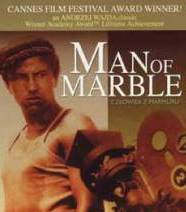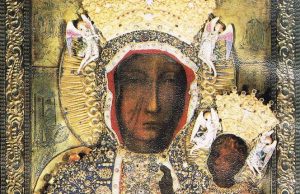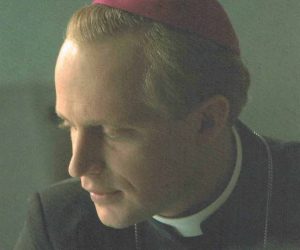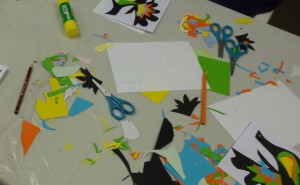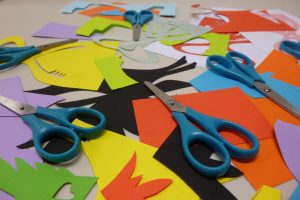‘Battle of Warsaw – Uprising in 1944 / Bitwa o Warszawe – Powstanie w 44’ dir. Wanda Koscia (2005). History of the Warsaw Uprising, the bloodiest military action taken by the only underground army in occupied Europe.
The history of the 1944 Warsaw Uprising presented from the perspective of participants, mainly insurgents who in a lively, involved and emotional way talk about their experiences, fate of their friends and their beloved city. The story is also told from 2 other perspectives, a German soldier, who participated in the brutal suppression of the Warsaw’s quarter Wola and a British pilot and member of the British Military Mission in Moscow.
Their accounts allow their views to reconstruct a dramatic story of the uprising and the personal dramas of its participants.Produced in Poland and Great Britain. (47 min)
PLUS
‘A Forgotten Odyssey’ dir. Jagna Wright (2000). In 1940, after Russia invaded Poland, Stalin deported 1.7 million Poles to slave labour camps in Siberia and Kazakhstan. Only one third of them survived.
They tell their stories. The main destinations of these transports were Archangelsk and Kazakhstan. In some cases, the deportees were just dumped in the middle of a forest and told to build their own shelters. In other cases, they were moved to various collective farms called “kolhozs” (collectivnoye hoziaystvo).
It is estimated that slightly more than 100,000 people were later transported to Pahlevi, Persia, via the Caspian Sea. Roughly half were soldiers and half civilians. This constitutes about 7 percent of all Polish citizens who were in Russia between September 1939 and June 1941.
How many remained in Russia, how many died, how many were allowed to return to Poland after the war can be only speculated. (52 min)
In 1976, a young woman, Agnieszka is making her diploma film, looking behind the scenes at the life of Birkut, at how that heroism was created, and what became of him. She gets hold of out takes and censored footage and interviews the man’s friends, ex-wife, and the filmmaker who made him a hero.
The film chronicles the fall from grace of a fictional heroic Polish bricklayer, Mateusz Birkut, who became the symbol of an over-achieving worker in Nowa Huta, a new socialist city created in the 1950’s near Krakow. Dozens of men were lined up in the mud in a food line. There are no women to be seen. The men are housed in barracks. When presented with a single fish on a plate for lunch, they begin spontaneously to pelt the Party Official with the fish and succeed in driving him out. Birkut is one of these workers…
It is a surprise that Wajda would have been able to make such a film, revealing the use of propaganda and political corruption during the period of Stalinism.
In 1980, during the strikes in Gdansk, Wajda visited the shipyard. A worker shouted to him “Now you must make a film about our story – ‘Man of Iron.’
The workers thus directly commissioned Wajda’s second film. Its production, from beginning to end, was completed in nine months.
The story unfolds…In Warsaw in 1980, the Party sends Winkel, a weak, alcoholic TV hack, to Gdansk to dig up dirt on the shipyard strikers, particularly on Maciek Tomczyk, an articulate worker whose father was killed in the December 1970 protests. Posing as sympathetic, Winkel interviews people who know Tomczyk, including his detained wife, Agnieszka. Their narrations become flashbacks using actual news footage of 1968 and 1970 protests and of the later birth of free unions and Solidarity.
‘Our Lady of Czestochowa’, is a religious film showing the history of the monastery and sanctuary of Jasna Gora in Czestochowa, Poland. The film takes you on a tour of Poland’s greatest religious shrine, including those places which are not accessible to ordinary visitors. This film helps to understand the unique phenomenon of the Jasna Gora sanctuary
The Black Madonna Icon is a 122 x 82cm painting on a wooden panel which is shrouded by richly ornamented jeweled robes, legends and miracles.It is believed that Poland is under protection of The Black Madonna painting. A famous Catholic icon celebrated by Polish people on 15th August each year.
Story about a Pilgrimage to Czestochowa, Poland
The tradition of pilgrimages to Czestochowa, a famous Marian sanctuary (also commonly known by the name of Jasna Gora, or the Bright Mountain) is a long and diverse in Poland.
The most characteristic form of devotion is the summer walking pilgrimages to the sanctuary, when people from all over the country set off to walk in organized groups to this very special place. The experience involves hours or days of walking but there’s much more to do than just walk. The friars organize lectures on the way, focusing on various aspects of Catholic spirituality.
Perhaps the most striking feature of such an experience, it is the attitudes of people you inevitably meet on the way. From sharing drinking water or carrying your backpack for a while, to just being there to listen when you need it – but also inhabitants of local villages that pilgrimage passes through offer vast assistance, provide meals and places to stay overnight. Thus the way to the sanctuary becomes at least equally important to finally reaching it – another nice parable to the Christian way of life.
The experience is open to anyone who would like to participate in the pilgrim each August. There are some foreign guests – from the US, France, Finland, Philippines. Just bring yourself a pair of comfortable shoes – and you can start walking. Text by Kamila (Warsaw, Poland)
A 10 year Karol Wojtyla in the 1930’s in Poland, has dreams, many dreams. One by one they are shattered. First, by the loss of his mother and brother. Then by the outbreak of war and the death-fleeing exodus that ensued. And finally by the first sign of Jewish persecution.
These events will mark Karol’s long journey from worker, to poet and to teacher. A journey full of encounters that eventually leads him to become the man we all knew. A man who has marked an era. A man who has made history.
Karol Wojtyla, whose tireless fight for humanity and basic fundamental rights begins with the German invasion of his native Poland in 1939.
Appalled at the brutal treatment afforded his Jewish friends, Karol turns to his religion as a means of making a difference in the world, and with the help of several other like-minded individuals mounts a non-violent, but extremely effective, anti-Nazi resistance.
Ordained as a priest at war’s end, Karol finds himself fighting another form of Godless totalitarianism, this one from the Communists who have overtaken his country.
Ultimately, Father Karol Wojtyla’s noble mission culminates in his being elected as Pope John Paul II in 1978 and it was surely no coincidence that Poland’s liberation was now but a matter of time.
Polish Museum, 125 Elliot St, Howick phone 09 533 3530.
Entry by cash donation or internet banking
Come try something new and create with paper and scissors.
Wycinanki or cut-outs is a traditional Polish folk art
This adult group meets on the first Friday each month, we cut various types of designs, tree of life, roosters, flowers and circles.
$10pp includes a cuppa. A warm welcome awaits you
New members are welcome any time as we work at our own pace, materials and designs provided. Coming for the first time? Please ring me.
Polish decorative paper cut-outs belong to the most beautiful in the world. Traditionally they were made by hand, without drawing the design first, cutting out using sheep-sheering scissors.
- New members can watch a short presentation
- Designs based on the Lowicz and Kurpie regions of Poland
- Beginners workshop is also available throughout the year, gather your group together and make a booking, a date and time to suit you.
- Ideal class for children’s birthday parties too! 8 years plus, can be available on some Saturdays
For enquiries and bookings please phone 533 3530 or email us.
Museum hours Tue to Fri 10-4 and Sun 12-5
Come try something new and create with paper and scissors.
Wycinanki or cut-outs is a traditional Polish folk art
This adult group meets on the first Friday each month, we cut various types of designs, tree of life, roosters, flowers and circles.
$10pp includes a cuppa. A warm welcome awaits you
New members are welcome any time as we work at our own pace, materials and designs provided. Coming for the first time? Please ring me.
Polish decorative paper cut-outs belong to the most beautiful in the world. Traditionally they were made by hand, without drawing the design first, cutting out using sheep-sheering scissors.
- New members can watch a short presentation
- Designs based on the Lowicz and Kurpie regions of Poland
- Beginners workshop is also available throughout the year, gather your group together and make a booking, a date and time to suit you.
- Ideal class for children’s birthday parties too! 8 years plus, can be available on some Saturdays
For enquiries and bookings please phone 533 3530 or email us.
Museum hours Tue to Fri 10-4 and Sun 12-5
Paper cut-outs school holiday workshop $8.00 per person, 7 years plus, relaxing and fun, plenty of ideas given to take home and try more designs!
Come create with paper and scissors. Great activity for the whole family
Polish decorative paper cut-outs belong to the most colourful in the world. Traditionally they were cut by hand, without drawing the lines first, using sheep-sheering scissors.
- Take home 2 art works.
- Watch a short presentation
- Designs based on the Lowicz and Kurpie regions of Poland
- This workshop is also available throughout the year, other dates and days, and is ideal for birthday parties too!
Bookings preferred please, phone 533 3530 or 021 107 0169 or email us.
Museum hours Tue to Fri 10-4 and Sunday 12-5
Come try something new and create with paper and scissors.
Wycinanki or cut-outs is a traditional Polish folk art
This adult group meets on the first Friday each month, we cut various types of designs, tree of life, roosters, flowers and circles.
$10pp includes a cuppa. A warm welcome awaits you
New members are welcome any time as we work at our own pace, materials and designs provided. Coming for the first time? Please ring me.
Polish decorative paper cut-outs belong to the most beautiful in the world. Traditionally they were made by hand, without drawing the design first, cutting out using sheep-sheering scissors.
- New members can watch a short presentation
- Designs based on the Lowicz and Kurpie regions of Poland
- Beginners workshop is also available throughout the year, gather your group together and make a booking, a date and time to suit you.
- Ideal class for children’s birthday parties too! 8 years plus, can be available on some Saturdays
For enquiries and bookings please phone 533 3530 or email us.
Museum hours Tue to Fri 10-4 and Sun 12-5
Come try something new and create with paper and scissors.
Wycinanki or cut-outs is a traditional Polish folk art
This adult group meets on the first Friday each month, we cut various types of designs, tree of life, roosters, flowers and circles.
$10pp includes a cuppa. A warm welcome awaits you
New members are welcome any time as we work at our own pace, materials and designs provided. Coming for the first time? Please ring me.
Polish decorative paper cut-outs belong to the most beautiful in the world. Traditionally they were made by hand, without drawing the design first, cutting out using sheep-sheering scissors.
- New members can watch a short presentation
- Designs based on the Lowicz and Kurpie regions of Poland
- Beginners workshop is also available throughout the year, gather your group together and make a booking, a date and time to suit you.
- Ideal class for children’s birthday parties too! 8 years plus, can be available on some Saturdays
For enquiries and bookings please phone 533 3530 or email us.
Museum hours Tue to Fri 10-4 and Sun 12-5

